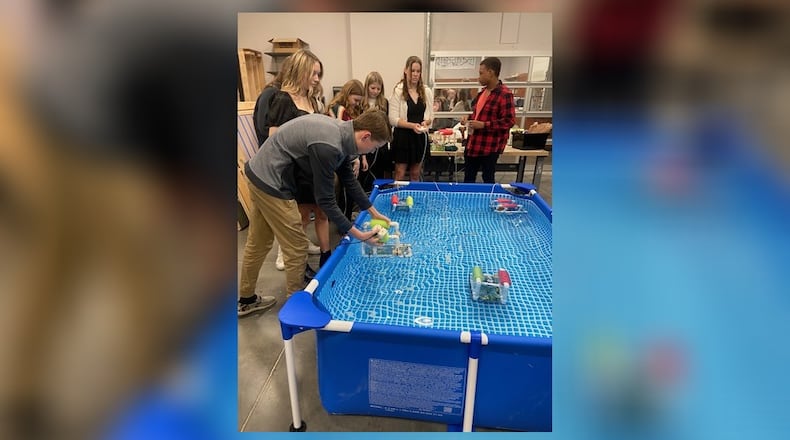Global Impact, in partnership with the West Central Ohio Port Authority, now plans to build a 30,000-square-foot facility on Clark State’s Springfield campus with an anticipated cost of $11 million to create an “Upper Academy” for grades 10-12.
Founding director Josh Jennings said officials are in the design phase of the new facility, and he hopes to break ground in the summer of 2023 with occupancy in August 2024.
“We’re in a position where we can put a significant amount of capital towards the project. In addition, we’re developing plans with long-standing partners who have expressed an interest in investing to support our efforts,” Jennings said.
Along with providing the land for the Upper Academy facility, Clark State will also provide additional space on the campus for Global Impact programming and classes.
‘Careers of the future’
Clark State President Jo Alice Blondin said the college and Global Impact have collaborated for years, and she looks forward to the location on the Leffel Lane campus.
Having Global Impact’s new building on Clark State’s campus will allow the two entities to collaborate on what Blondin called “one of the most exciting economic and workforce development opportunities in our region,” the air mobility field. That includes work on electric vertical take-off and landing vehicles, called eVTOLs, at Springfield-Beckley Municipal Airport. That is where the National Advanced Air Mobility Center of Excellence is now under construction.
The Global Impact site at Clark State “will serve as a training site for careers of the future, and students can complete their degree at Clark State,” Blondin said.
By alleviating capacity restrictions at Global Impact’s current location inside the Springfield Center of Innovation at The Dome, the new facility will also help serve more students. The goal is to expand programming down to sixth grade starting in August 2024 and serve more students overall in grades 7-12.
“This is in response to the current demands we see in our region,” Jennings said.
Mke McDorman, president and CEO of the Greater Springfield Partnership, said, “This is an important next step as the community seeks to develop new company investments and jobs” related to the National Advanced Air Mobility Center of Excellence being built at the airport.
“These aerospace and aviation technology curriculum opportunities will help pave the way for area students to step into good-paying jobs right here in Springfield,” he said. “GISA, working with Clark State and the National Advanced Air Mobility Center of Excellence, will also help our area win over other locations around the country in the attraction of these ‘Jetson’s like’ aviation company investments and jobs.”
The Upper Academy will serve the higher grade students who will be preparing to enter the workforce or to choose a career path to continue their education.
For example, of the 91 students who graduated in 2022, 32 received an associate’s degree and a total of 3,584.5 college credits were earned.
As for next steps, Jennings said it will be a continuation of working through the design process to finalize what is needed based on the programming. Over the next few weeks, initial surveying will take place and, once a design is finalized, a guaranteed maximum price will be proposed.
Ag and aviation overlap
The new career pathway will be Aerospace and Aviation Technology.
Global Impact leadership, industry professionals from around Ohio and the Ohio Department of Education’s Office of Career Technical Education have explored this new pathway and what programming would look like to support the technologies.
Although the academy has had success in its current programs of agriculture, food, natural resources and bioscience, Jennings said “it made sense” to integrate the new pathway.
Regional leaders approached the school over a year ago to consider exploring and implementing opportunities in the aerospace and aviation technology fields.
“Considering the current implications that this industry already had on the agriculture industry in areas such as unmanned aerial systems (drone) technology and precision technology, it made sense to look at integrating these themes and concepts,” Jennings said.
How this new curriculum will be implemented will reflect how the current programming in agriculture and bioscience is delivered, Jennings said. Specific courses will depend on input from industry professionals and what is needed to support the emerging technologies in the area of advanced air mobility.
“We want to continue to provide relevancy in traditional disciplines through authentic real-word scenarios and applications,” he said.
The academy is currently accepting applications for next year’s seventh-grade class, with applications due Jan. 13. Students who apply will be considered for the lottery, and those who don’t make it will be waitlisted and considered once the expansion begins next year in preparation for fall 2024.
About the Author

